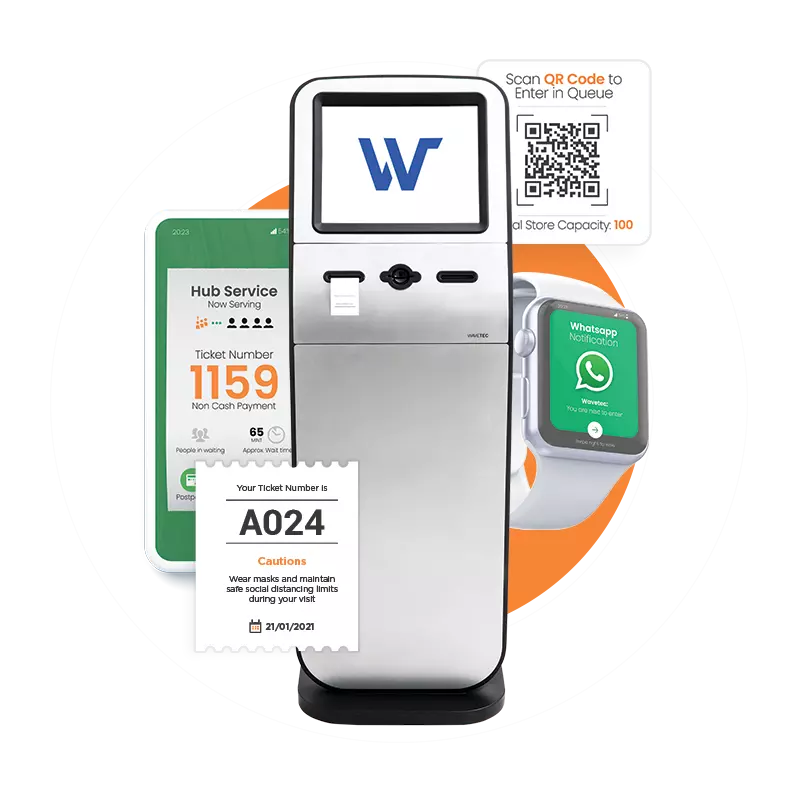Measuring and improving customer experience is vital for any business trying to gain a competitive edge in a crowded marketplace. A positive customer experience promises increased customer loyalty and retention rates, leading to higher ROI.
On the contrary, a poor customer experience can exacerbate customer retention rate and enforce a negative brand image, leading to a significant decline in ROI.
There are several ways to measure customer experience through online surveys, analyzing customer experience metrics, and setting up a customer experience dashboard with the right KPIs.
Some of the widely used customer experience metrics & KPIs include customer satisfaction score, customer churn rate, net promoter score, customer retention rate, social media sentiments, etc.
These various KPIs and surveys allow businesses to gather required feedback regarding customer experience and behavioral insights. Improving these KPIs to uplift customer experience ratings significantly improves customer experience and helps businesses to scale faster.
Different CRM platforms offer dedicated customer experience dashboards to monitor and measure customer experience with modern data analytics tools and various data sources.
Some vital data sources to collect customer data includes websites, landing pages, marketing campaigns, and survey responses.
By utilizing surveys, customer feedback, and customer experience management platforms, businesses can gain valuable insights into the customer experience and take steps to improve it.
If you want to discover how to measure customer experience and the important customer experience metrics you must not overlook, you landed at the right place.
This article will help you discover some important aspects of measuring customer experience and set up an effective customer care strategy to stay ahead of your competition. Let’s discuss this in detail.
What is Customer Experience
In today’s highly populated marketplace, customers have various alternatives to buy anything from desired brands and various resources to make an informed purchase decision.
Turning their buyer journey seamless and hassle-free is mandatory to keep prospects intact and interested in your brand, products, and services. It helps you build rapport with your customers and retain them as loyal customers for future sales and word-of-mouth marketing.
How To Measure Customer Experience
According to Gartner, around 2/3rd of customer experience exports and decision-makers struggle to formulate strategies that improve customer loyalty, leading to outstanding brand awareness and a competitive market presence.
Therefore, using the relevant customer experience metrics promises higher growth and success rates. Below are the 7 proven ways and KPIs that resolve all your pain points if you are confused about measuring customer experience and growing your business faster.
1- Surveys – Collect customer feedback
Surveys are widely used in almost all niches to measure customer experience by gathering feedback about the products, services, shopping experience, and problems that may occur at any stage of buyers’ journey.

There is no better way to ask for your performance from the direct beneficiaries of your brand or services, your customers. It helps you discover unknown and overlooked aspects of your business that may make or break it. These Surveys can be conducted online or in person to gain insights into customer concerns, preferences, priorities, pain points, and behaviors.
Businesses can gain qualitative and quantitative insights into customer experience by asking open-ended or scale-based questions in their surveys. It allows them to make data-backed decisions to improve the customer experience at each stage of their sales funnel.
- Open-ended questions allow customers to provide qualitative feedback in their own words instead of selecting from a predefined list of options. These questions help gain insights into customer perceptions, preferences, and behaviors.
- Scale-based questions leverage a numerical scale to measure a customer’s level of agreement or satisfaction with a brand, product, service, or particular aspect of a business or industry. These types of surveys are helpful in quantifying customer feedback and are used to complement open-ended questions to get a more insightful overview of customer experience ratings.
Advantages of Surveys
- Businesses can conduct surveys to get detailed feedback and insights into a customer experience that cannot be uncovered using standard tools or KPIs.
- The survey routines can be easily administered compared to other technical ways of gathering data from various sources.
Disadvantages of Surveys
- The data gathered after conducting a survey cannot be analyzed without being converted into a visual and quantitative format, which is time-consuming.
- It is impossible to say whether the respondents have provided accurate feedback or just run through the survey to fill out the form or questionnaire.
Check out the right timing to collect customer feedback without any bias.
2- Net Promoter Score (NPS) – Measuring the customer experience
Net Promoter Score (NPS) is another one of the most widely used customer experience metrics. It was adopted widely due to its straightforward approach.
According to Fortune, it is estimated to be used by over 70 percent of Fortune 1000 businesses to measure customer satisfaction with their brand or services.

NPS is based on a survey-based approach that asks customers to rate the potential to suggest their brand, products, or services to a friend, family member, or colleague. It typically uses a scale of 1 (not at all likely) to 10 (extremely likely).
It’s usually a scale-based survey that asks attendees to rate their likelihood of recommending a brand from a scale of 1 to 5 or 1 to 10. Sometimes it also involves an open-ended question to add more context to the answer, like why would you suggest our brand, product, services, etc.?
The NPS score is calculated based on the following formula.
The Percentage of Promotors – The Percentage of Detractors
Whereas promotors are those who scored a 9 or 10 (on a scale of 10), and detractors are the ones who marked between 0-6 (on a scale of 10).
For instance, if 40 percent of attendees are detractors and 60 percent are promotors, the NPS score will be 60-40 = 50.
Advantages of NPS
- NPS is known for providing a precise measure of customer loyalty and satisfaction by enabling you to find the number of customers who are up for your brand advocacy.
- The results you get can be easily compared across different industries and niches. It helps you benchmark your business in the industry to evaluate if the market is more inclined toward your brand or your competitors.
Disadvantages of NPS
- Being a scale-based survey, NPS lacks insights into the perspective of the customer’s feedback and lacks reasoning.
- It provides insights into customer effort, and another customer experience rating, further discussed in the following section.
3- Customer Effort Score (CES) – Measure experience through out the journey
Customer Effort Score or CES is used to identify customers’ take on whether the buyer’s journey and shopping experience with your brand is seamless or full of roadblocks.
It is vital to acknowledge customer effort ratings as you are more likely to lose leads and potential customers if their journey with your brand is not seamless.

Customer Effort Score is calculated by a survey that generally asks customers to rate statements like “[Brand Name] helped me find the [Product/Service Name] to resolve [Particular Pain Point]” using a rating system ranging from 1 (strongly disagree) to 5 (strongly agree).
The score is calculated as an average of all the respondents’ ratings.
CES = (Sum of Ratings) / (Total number of respondents)
A higher CES score means your customer’s experience with your brand, services, or website is seamless and hassle-free.
Advantages of CES
- It helps you find how smooth and seamless your business is for your customers and prospects at different stages of the buyers’ journey.
- It helps you uncover areas where customers find navigating difficult and are most likely to terminate their journey with your brand.
Disadvantages of CES
- It lacks feedback about overall satisfaction unless combined with some other relevant KPIs.
- The feedback of the respondents may be subjective to their priorities and preferences.
4- Customer Satisfaction Score (CSAT) – Customer experience metric
Like the NPS, customer satisfaction scores can be used across different industries to find how well your business poses against potential rivals.
The most significant perk of using this remarkable customer experience metric is its ability to reflect an overall customer satisfaction rating. Moreover, the CSAT metric is very easy to quantify and calculate.

The most fruitful way to employ CSAT is to ensure that you measure it regularly instead of calculating it annually. The customer satisfaction score shows whether you are going in the right direction or need quick changes to keep your existing customers intact and satisfied with your brand or services.
You can calculate CSAT by asking your existing employees to rate your products or services on a scale of 0 to 10. You can ask your customers whether they are satisfied with your products or services via online forms, emails, Google App Store, or Apple Store.
To better understand customers’ preferences and perspectives of your business, customer satisfaction scores can be used with other customer experience metrics like NPS, CES, customer retention rate, etc.
Advantages of CSAT
- The only customer experience rating that gives a direct and instant measure of customer satisfaction.
- It can be calculated for different projects, services, or features to make a more robust business strategy centric around customer experience.
Disadvantages of CSAT
- The metric fails to offer detailed feedback as it relies more on quantitative feedback.
- It lacks insights into customer effort that reflects difficulties and loopholes in your brand, website, products, or services.
5- Customer Retention Rate – Customer experience metric
Customer retention rate is used to measure whether your business and marketing or sales teams remained successful in retaining customers over a due course of time. The customer retention rate is the reciprocal of the customer churn rate that denotes the customers who abandoned your business and moved to your competitors.
This customer experience metric is calculated as a percentage of retained customers at the end of a particular time frame,
[(Total Customers – New Customers) / (number of customers at the beginning of the time frame) * 100
Advantages of Customer Retention Rate
- It showcases a reflection of long-term customer satisfaction
- It can be used to predict future growth and ROI based on existing data
Disadvantages of Customer Retention Rate
- It lacks additional feedback associated with customers’ behavior, priorities, preferences, and perspective of your brand.
6- Social Media Monitoring – Customer sentiment measurement
Social Media Monitoring is the process of identifying & evaluating what is being discussed on social media platforms or forums about a company, product, or service.

Social Media monitoring is quickly becoming a vital customer intelligence tactic to gain valuable insights into customer sentiments and perspectives of your brand. Among different ways to monitor social media sentiments and gain insightful details, some of the proven techniques include:
- Monitoring online social forums and industry-specific groups
- Using CRM tools to gather feedback from Facebook, LinkedIn, Instagram, and Twitter
- Asking customers to vote in favor of their favorite brand, product, service, or features
Advantages of Social Media Monitoring
- It offers real-time feedback about customer satisfaction, concerns, and sentiments.
- It can identify trending issues, news, cultures, and practices. These insights can be used to address customer expectations more precisely.
Disadvantages of Social Media Monitoring
- The process of social media monitoring is time-consuming and requires a strategic and analytical approach.
- It lacks the context of the individual’s relevance to your industry and market. You cannot rely on the sentiments of non-technical and poorly-informed subjects to formulate or revamp your entire business strategy.
7- Key Performance Indicators (KPIs) – Metrics
Key Performance Indicators (KPIs) are used to quantify customer experience metrics and measure the performance and success of your business strategy. They track progress toward goals and objectives centric around customer experience and help you identify areas that need to be revamped.

KPIs are essential in measuring customer experience because they provide a way to track and measure the performance of obscure aspects of the customer experience. By regularly monitoring and analyzing customer experience KPIs, businesses can identify areas of the customer experience that are performing up to the benchmark and areas that need optimization.
It allows businesses to interpret complex problems logically and make data-driven strategies to find how to improve the customer experience, gain a cutting edge over competitors, and improve the bottom line.
Below are some widely used customer experience metrics used by businesses of all scales.
- NPS (Net Promoter Score) – This measures the likelihood of customers recommending a business to others. It is commonly used as a KPI for customer experience, as it is a good indicator of overall customer satisfaction.
- CES (Customer Effort Score) measures a customer’s effort to solve a problem. It is used to measure how easy or difficult it is for customers to interact with a company.
- CSAT (Customer Satisfaction Score) – It measures the customer’s satisfaction with a product or service. It is a standard KPI for customer experience, as it directly measures customers’ satisfaction with their experience.
- Customer Retention Rate – This measures the percentage of customers who continue to do business with a company over a certain period. A high retention rate is a sign of good customer experience.
- Social Media Sentiment – This measures the tone and emotion of conversations about a brand on social media platforms. It is a useful KPI for customer experience, as it can provide insights into how customers feel about a brand and how they talk about it online.
Conclusion
Now, you have a rich idea about measuring customer experience and why it is critical for any business looking to improve and scale. The strategy to improve customer experience starts with using the right and most insightful customer experience metrics from surveys, customer feedback, and CRM analytics.
It’s essential for your business growth to regularly measure and analyze customer experience and identify critical areas with space for improvement and optimization.
To formulate a successful customer experience measurement strategy, businesses should involve the most critical stakeholders of the process, which are customers. It’s also important to set milestones and goals and track progress toward achieving them.
By investing time and resources in measuring customer experience, businesses can build trustworthy rapport with their customers and retain them for long-term success & growth opportunities.
